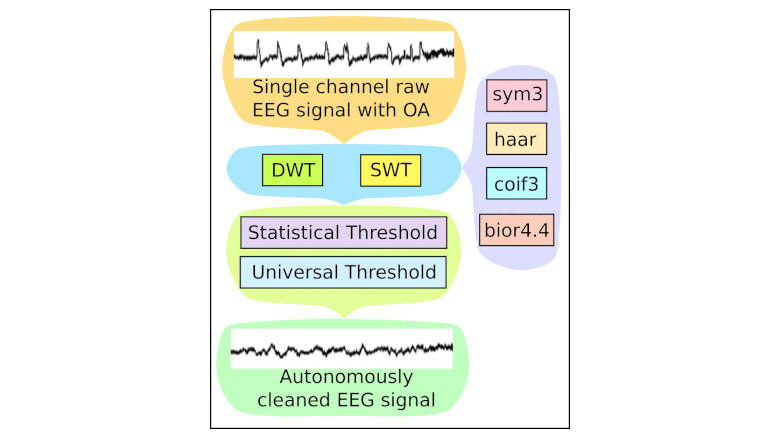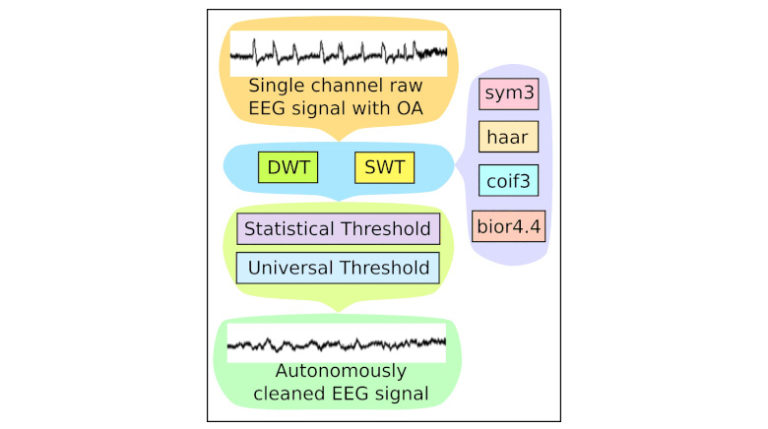
Electroencephalogram (EEG) is a technique for recording asynchronous activation of neuronal firing inside the brain with non-invasive scalp electrodes. Artifacts such as eye blink activities can corrupt these neuronal signals. While ocular artifact (OA) removal is well investigated for multiple channel EEG systems, in alignment with the recent momentum towards minimalistic EEG systems for use in natural environments, we investigate unsupervised and effective removal of OA from single-channel streaming raw EEG data. In this study, unsupervised wavelet transform (WT) decomposition technique was systematically evaluated for effectiveness of OA removal for a single-channel EEG system. A set of seven raw EEG dataset was analyzed. Two commonly used WT methods, Discrete Wavelet Transform (DWT) and Stationary Wavelet Transform (SWT), were applied. Four WT basis functions, haar, coif3, sym3, and bior4.4, were considered for OA removal with Universal Threshold (UT) and Statistical Threshold (ST). To quantify OA removal efficacy from single channel EEG, five performance metrics were utilized: correlation coefficients (CC), mutual information (MI), signal to artifact ratio (SAR), normalized mean square error (NMSE), and time-frequency analysis. The temporal and spectral analysis shows that the optimal combination could be DWT with ST with coif3 or bior4.4 to remove OA among sixteen combinations. This work demonstrates that WT can be an effective tool for unsupervised OA removal from single channel EEG data for real-time applications.

